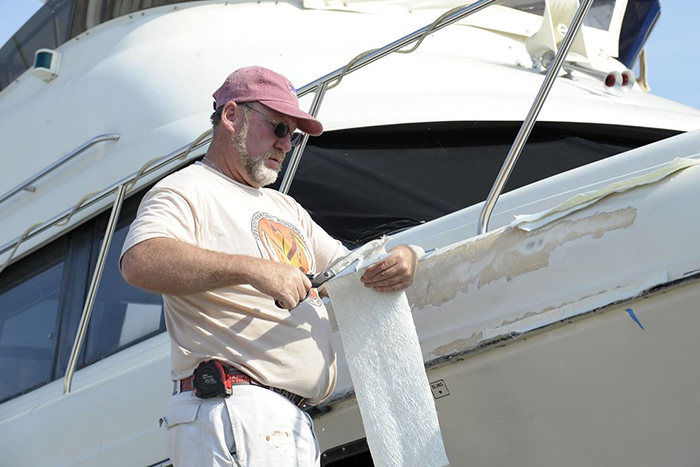
Boat Restoration and Repair Tips
Being a boat owner has its perks. You’re almost always ready for a trip on the waters, can go fishing with a little preparation, and have the best social events on your boat. However, you have your fair share of responsibility as well. Your boat will require a lot of maintenance to retain its value. If you’re a new boat owner, you’ll need a few restoration and repair tips to get started.
But you should prepare to come across new challenges once you start digging in. You might even have to sacrifice hours on the boat before it is in proper shape. Nonetheless, the wait, though, is worth it!
Set up an Appropriate Workspace
The first and foremost step you need to consider is having a workspace for you to easily make repairs and restorations on your boat. You can’t spend hours on the beach or at your front yard/garage trying to restore your boat. Instead, you need to look for a workspace that is close to where you live and not too distant. Distant workspaces can cause a delay in completing the work. Finding a workspace nearby can help you address that while you spend more time repairing your boat. You must also have access to water, a power source, and adequate lighting to get through the day.
Start with an Inventory of Tools
The next thing you want is an inventory of tools. After all, you might never really know what problems may come up once you begin to examine your boat and make repairs. The restoration process may vary drastically from what you planned initially. However, you can look at your boat for an idea and go over the possible tools you need. If you don’t have them, consider looking for them at a local hardware store or purchasing them online. From ladders to hoses, you will need a ton of other tools.
A smarter approach will be to get two cents from a professional if you are clueless about what you need to do. They can also explain how you should make repairs and elaborate on what tools you will need. An expert’s help is the best thing to consider, especially when you are a first-timer with a boat.
Clean the boat
If your boat is old or has been standing in one place for a long time, it likely has a layer of dust and grime covering it. While inspecting your boat, dirt and grime can make lower visibility, which affects consequent repairs. Hence, make sure you get to the cleaning before you get on to the latter.
Start with a hose and clean from the highest point of the boat towards the lowest. Follow the same tactic, or you’ll end up just going back and forth, wasting more water and energy. While DIY options and cleaning agents available at your household may be okay to use, it’s always better to invest in specialized tools to clean your boat. Brush the windshields and windows with a soft brush to avoid scratches.
Inspect the Boat
This is probably one of the most important parts of the entire process. You need to conduct a boat inspection before you making restorations. It is better that you opt for this a day or two before so that you save time the next day. Inspect everything and create a list of everything that needs restoration or fixing.
You can always contact the boat seller and discuss some basic issues with the boat and its general history. It’s better to go over these factors before you make the final boat purchase. It will give you a clear idea of how much you need to invest in your boat up before it’s up and running. From previous repairs to the frequency of use, make sure you get a breakdown of its usage and repairs.
A good inspection will result in a healthy boat, so make sure you look into all those nooks and crannies.
Repair the Boat
After you inspect the boat and have gathered enough information about it, you need to start making repairs. Look at the issues that you feel require immediate attention over the insignificant ones. With the tools you have and the list you have created, start restoring your boat. Seek help from a professional, especially in technical areas. Or, you can watch a few tutorials online to help you with the repair process.
Look out for Rotting Wood
You may or may not notice this during inspection but always be sure to check the surface and every other element with wood furnishing. It might look perfect, but rotting wood is not unusual, especially with old boats. Search the deck, seats, and look out for any rotting or broken pieces of wood.
Replace rotting wood as you can. It is easy to do. Simply strip off the pieces that are visibly sagging and seem rotten. Next, use marine-grade materials to replace them. Make use of modern composite or plywood. While both work just as great, you can also look for more options.
Remove the Old Oil and Fuel from the Tank
Lastly, remember that old fuel can cause a lot of damage to the tank. Simply remove the old fuel and oil from the engine and gear. Old fuel tends to settle in the cylinder and does not ignite. Instead, it forms a conductive layer on the insulator, which is impossible to clean with the old fuel build-up. If this happens, you may need to change your boat’s spark plug.
Now that you have all the information you need to repair your boat get on to it, and be sure to consult a professional from time to time for more understanding.
